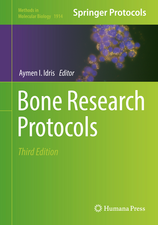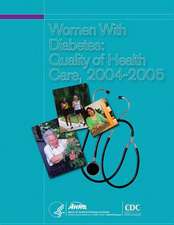Target Pattern Recognition in Innate Immunity: Advances in Experimental Medicine and Biology, cartea 653
Editat de Uday Kishoreen Limba Engleză Paperback – 6 dec 2011
The Toll-like receptors, first described in Drosophila and now well-characterised on human cells, provide an excellent demonstration of the wide range of different microbial products recognised by this family of receptors and of the signalling pathways which are triggered thus leading to induction of inflammatory cytokines and the activation of genes producing antimicrobial products. In addition, several cell surface proteins involved in target pattern recognition have been described on the surfaces of macrophages (macrophage mannose receptor and macrophage scavenger receptors), and on dendritic cells (DEC205), and to be involved with the uptake and clearance of whole microorganisms and polyanioic ligands. Pattern recognition is also utilised by intracellular receptors, with NOD-like receptors in the cytosol recognizing microbial molecules and activating the production of inflammatory cytokines or pathways that induce the production of inflammatory molecules. Secreted proteins, such as the pentraxins, which includes the acute phase reacting, C-reactive protein (CRP) and serum amyloid protein (SAP), and the collectins (mannan binding lectin, lung surfactant protein A and D) and ficolins can also readily recruit killing and clearance systems. Indeed, the serum complement system, which is one of the major defence systems in the bloodstream, is efficiently activated by CR P on its binding to the phosphocholine groups of microbial phospholipids—and the subsequent interaction of the bound CR P with C1q—to give classical pathway activation, or MBL, or ficolin, binding to arrays of mannose or N-acetyl-glucosamine residues, respectively, on the surfaces of microorganisms—to give lectin pathway activation. Also, in addition to the activation and clearance events associated with complement activation by some of the secreted pattern recognition receptors, it is accepted that all these pattern recognition receptors can generally accelerate the uptake and clearance of microbes via phagocytic cells.
In view of the growing interest in the cross-talk between innate and adaptive immunity, a thorough understanding of the initial recognition and triggering events, mediated via innate immune receptors, as addressed in this volume, is clearly very useful in helping to also fully understand the mechanisms of activation and control of the adaptive immune system—and to allow a full assessment of the relative roles played by innate immunity and adaptive immunity against a particular infection in higher organisms.
| Toate formatele și edițiile | Preț | Express |
|---|---|---|
| Paperback (1) | 1090.25 lei 6-8 săpt. | |
| Springer – 6 dec 2011 | 1090.25 lei 6-8 săpt. | |
| Hardback (1) | 1098.27 lei 6-8 săpt. | |
| Springer – 9 iul 2009 | 1098.27 lei 6-8 săpt. |
Din seria Advances in Experimental Medicine and Biology
- 9%
 Preț: 719.60 lei
Preț: 719.60 lei - 20%
 Preț: 691.93 lei
Preț: 691.93 lei - 5%
 Preț: 717.00 lei
Preț: 717.00 lei - 5%
 Preț: 716.28 lei
Preț: 716.28 lei - 5%
 Preț: 717.20 lei
Preț: 717.20 lei - 15%
 Preț: 640.24 lei
Preț: 640.24 lei - 5%
 Preț: 1113.83 lei
Preț: 1113.83 lei - 5%
 Preț: 715.71 lei
Preț: 715.71 lei - 5%
 Preț: 820.43 lei
Preț: 820.43 lei - 15%
 Preț: 641.38 lei
Preț: 641.38 lei - 5%
 Preț: 716.28 lei
Preț: 716.28 lei - 5%
 Preț: 523.99 lei
Preț: 523.99 lei - 5%
 Preț: 1031.00 lei
Preț: 1031.00 lei - 5%
 Preț: 717.00 lei
Preț: 717.00 lei - 5%
 Preț: 715.35 lei
Preț: 715.35 lei - 20%
 Preț: 1161.71 lei
Preț: 1161.71 lei - 5%
 Preț: 1170.51 lei
Preț: 1170.51 lei - 18%
 Preț: 1119.87 lei
Preț: 1119.87 lei - 5%
 Preț: 1288.48 lei
Preț: 1288.48 lei - 5%
 Preț: 1164.67 lei
Preț: 1164.67 lei - 5%
 Preț: 1101.73 lei
Preț: 1101.73 lei - 18%
 Preț: 1123.67 lei
Preț: 1123.67 lei - 5%
 Preț: 1435.64 lei
Preț: 1435.64 lei - 20%
 Preț: 1044.10 lei
Preț: 1044.10 lei - 18%
 Preț: 946.39 lei
Preț: 946.39 lei - 5%
 Preț: 292.57 lei
Preț: 292.57 lei - 18%
 Preț: 957.62 lei
Preț: 957.62 lei - 18%
 Preț: 1235.76 lei
Preț: 1235.76 lei - 5%
 Preț: 1231.55 lei
Preț: 1231.55 lei - 5%
 Preț: 1292.30 lei
Preț: 1292.30 lei - 5%
 Preț: 1102.10 lei
Preț: 1102.10 lei - 18%
 Preț: 1132.81 lei
Preț: 1132.81 lei - 5%
 Preț: 1165.19 lei
Preț: 1165.19 lei - 5%
 Preț: 1418.48 lei
Preț: 1418.48 lei - 5%
 Preț: 1305.63 lei
Preț: 1305.63 lei - 18%
 Preț: 1417.72 lei
Preț: 1417.72 lei - 18%
 Preț: 1412.99 lei
Preț: 1412.99 lei - 24%
 Preț: 806.16 lei
Preț: 806.16 lei - 18%
 Preț: 1243.29 lei
Preț: 1243.29 lei - 5%
 Preț: 1429.44 lei
Preț: 1429.44 lei - 5%
 Preț: 1618.70 lei
Preț: 1618.70 lei - 5%
 Preț: 1305.12 lei
Preț: 1305.12 lei - 18%
 Preț: 1124.92 lei
Preț: 1124.92 lei - 5%
 Preț: 1097.54 lei
Preț: 1097.54 lei - 15%
 Preț: 649.87 lei
Preț: 649.87 lei - 5%
 Preț: 1097.54 lei
Preț: 1097.54 lei - 18%
 Preț: 945.79 lei
Preț: 945.79 lei - 5%
 Preț: 1123.16 lei
Preț: 1123.16 lei
Preț: 1090.25 lei
Preț vechi: 1147.63 lei
-5% Nou
Puncte Express: 1635
Preț estimativ în valută:
208.65€ • 217.02$ • 172.25£
208.65€ • 217.02$ • 172.25£
Carte tipărită la comandă
Livrare economică 12-26 aprilie
Preluare comenzi: 021 569.72.76
Specificații
ISBN-13: 9781461417095
ISBN-10: 1461417090
Pagini: 222
Ilustrații: XX, 202 p.
Dimensiuni: 155 x 235 x 12 mm
Greutate: 0.32 kg
Ediția:2009
Editura: Springer
Colecția Springer
Seria Advances in Experimental Medicine and Biology
Locul publicării:New York, NY, United States
ISBN-10: 1461417090
Pagini: 222
Ilustrații: XX, 202 p.
Dimensiuni: 155 x 235 x 12 mm
Greutate: 0.32 kg
Ediția:2009
Editura: Springer
Colecția Springer
Seria Advances in Experimental Medicine and Biology
Locul publicării:New York, NY, United States
Public țintă
ResearchCuprins
Macrophage Pattern Recognition Receptors in Immunity, Homeostasis and Self Tolerance.- Pattern Recognition by Toll-like Receptors.- NOD-Like Receptors—Pivotal Guardians of the Immunological Integrity of Barrier Organs.- Toll-like Receptors and NOD-Like Receptors: Domain Architecture and Cellular Signalling.- Humoral Pattern Recognition Molecules: Mannan-Binding Lectin and Ficolins.- Lung Surfactant Proteins A and D as Pattern Recognition Proteins.- Pattern Recognition by Pentraxins.- Target Pattern Recognition by Complement Proteins of the Classical and Alternative Pathways.- Pattern Recognition in Phagocytic Clearance of Altered Self.- Structural Basis of Pattern Recognition by Innate Immune Molecules.- Lessons from the Fly: Pattern Recognition in Drosophila melanogaster.- Immune Recognition of Plasmodium-Infected Erythrocytes.- Innate Immune Recognition in Tuberculosis Infection.
Notă biografică
Dr. Uday Kishore is currently a University Lecturer in Immunology and Medical Microbiology at Division of Biosciences within School of Health Sciences and Social Care, Brunel University, London, UK. He earned his BSc from S.P. Jain College, Sasaram, Bihar, India and MSc from Hindu College and Department of Zoology, Delhi University. He did his PhD on gene synthesis and expression of human EGF jointly from CSIR Institute of Genomics and Integrative Biology, Delhi and University of Delhi. He spent most of his postdoctoral time working at MRC Immunochemistry Unit and Weatherall Institute of Molecular Medicine, John Radcliffe Hospital, University of Oxford funded by Wellcome Trust, Medical Research Council and European Commission. He has also been recipient of NASA fellowship (Salk Institute for Biological Studies, San Diego, USA), Wellcome Trust International fellowship (Laboratory of Molecular Biophysics, Oxford), MRC Inventor’s award, and Alexander von Humboldt fellowship (Institute of Medical Microbiology, Giessen, Germany (2004)).
Dr. Kishore’s research interests include structure-function relationships within human C1q, the first subcomponent of classical complement pathway, role of hydrophilic lung surfactant proteins in modulating allergy and infection, host-pathogen interaction involving an opportunistic fungal pathogen, Aspergillus fumigatus, and generation of therapeutic inhibitors of complement cascade.
Dr. Kishore’s hobbies include singing Indian classical and light music.
Dr. Kishore’s research interests include structure-function relationships within human C1q, the first subcomponent of classical complement pathway, role of hydrophilic lung surfactant proteins in modulating allergy and infection, host-pathogen interaction involving an opportunistic fungal pathogen, Aspergillus fumigatus, and generation of therapeutic inhibitors of complement cascade.
Dr. Kishore’s hobbies include singing Indian classical and light music.




























